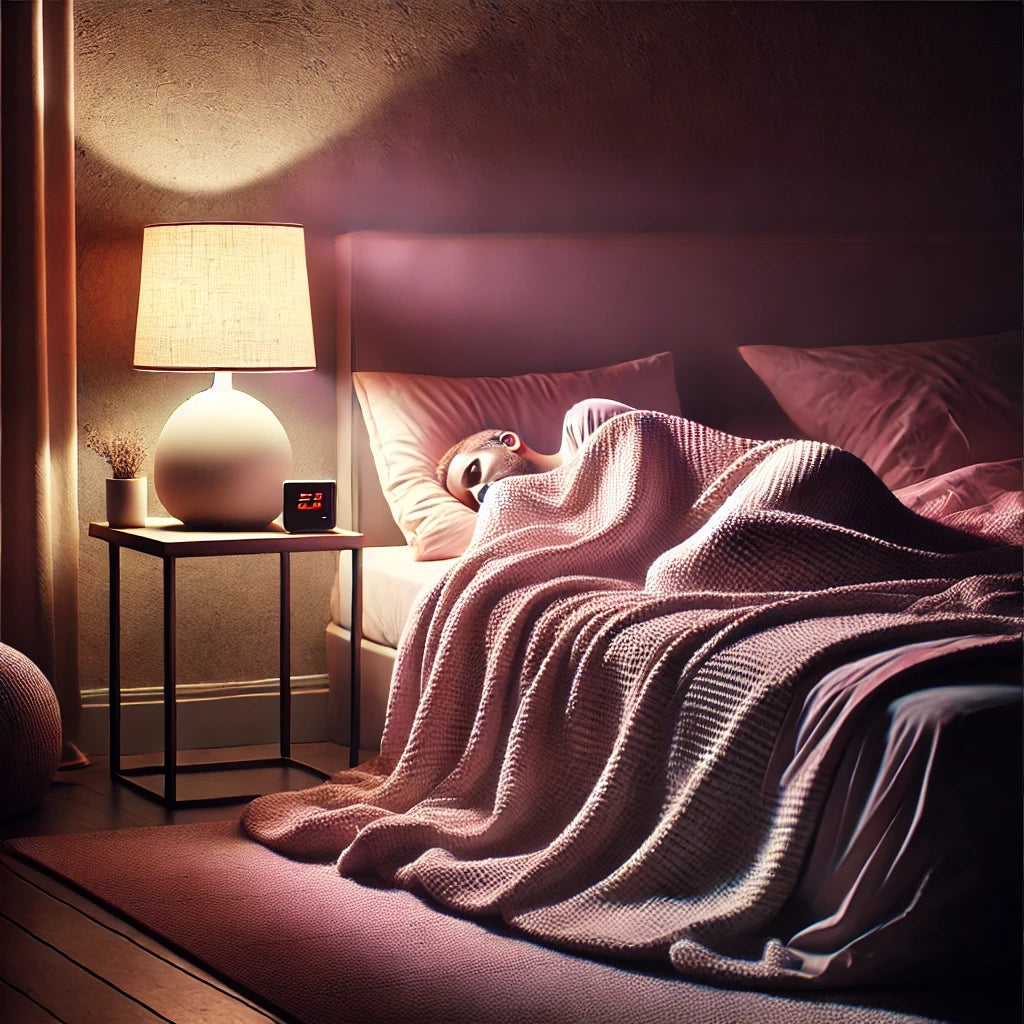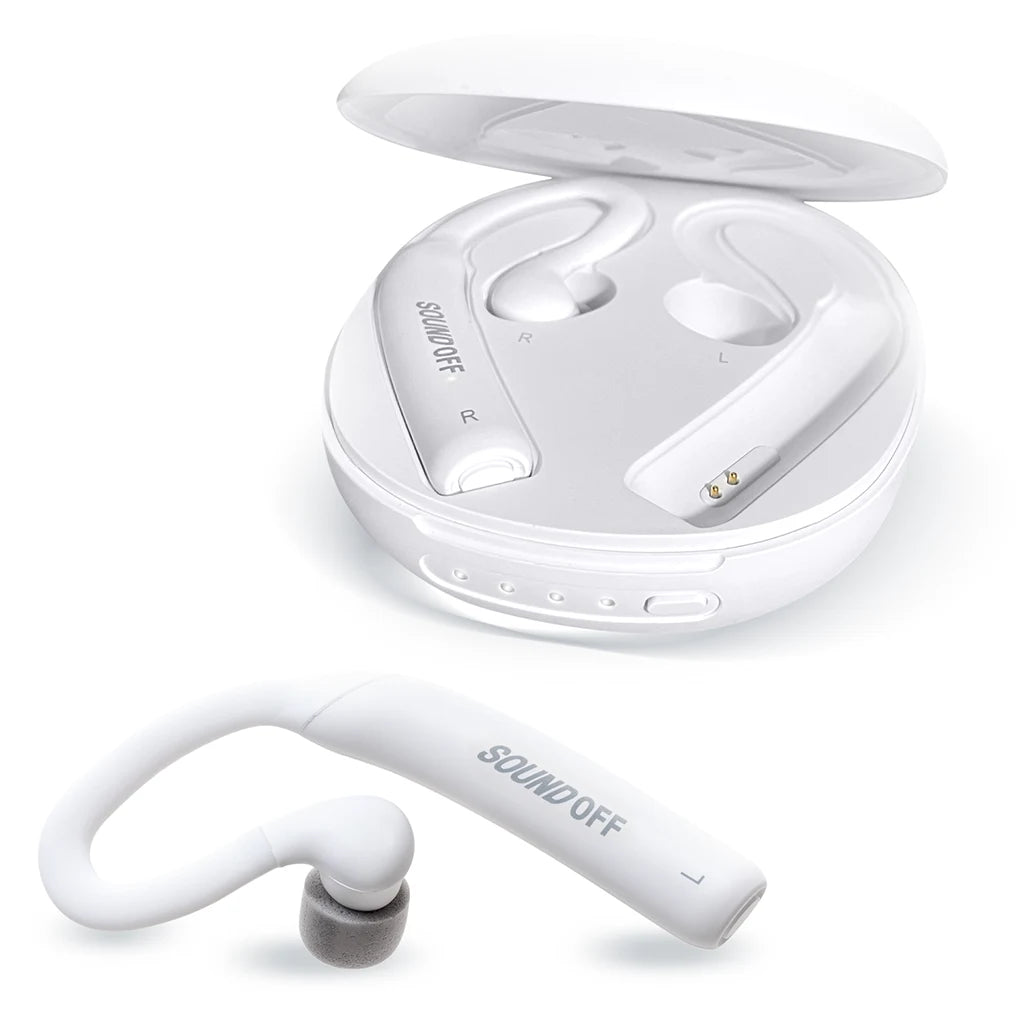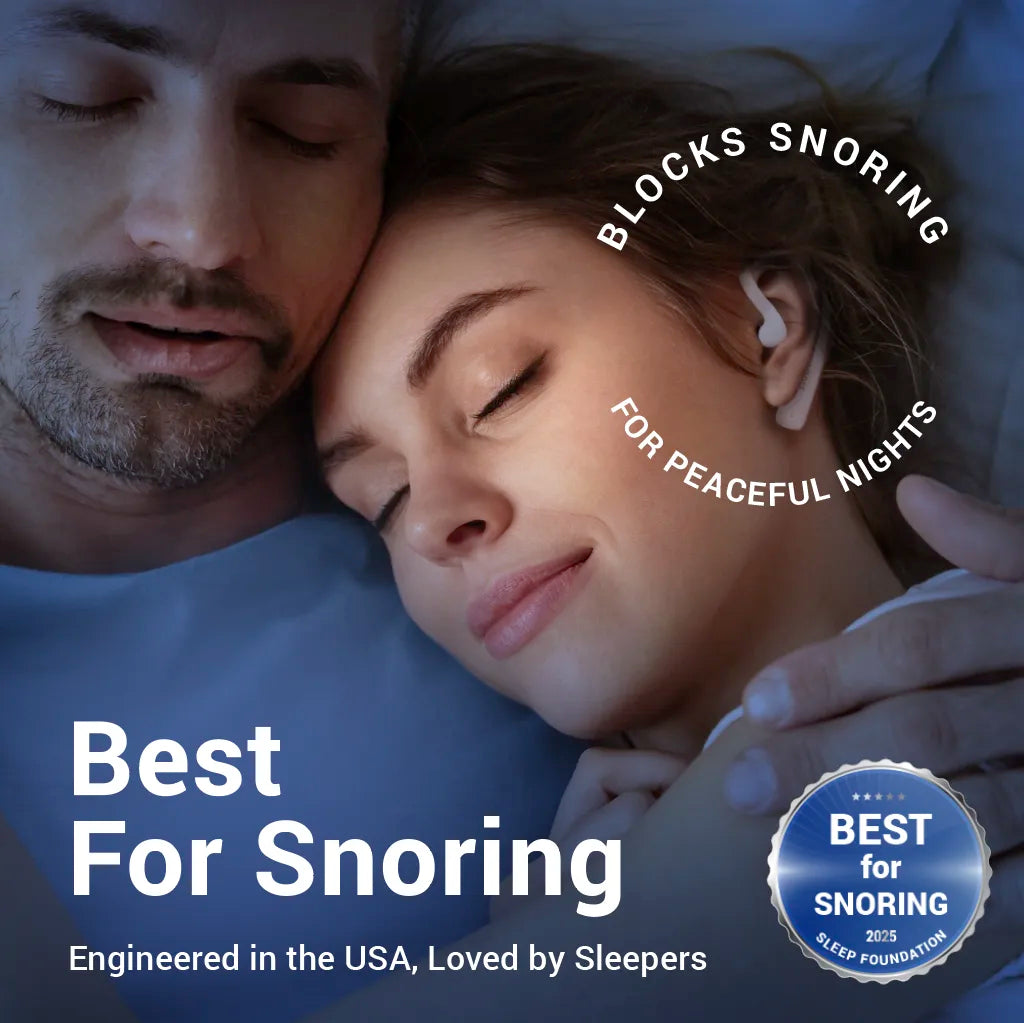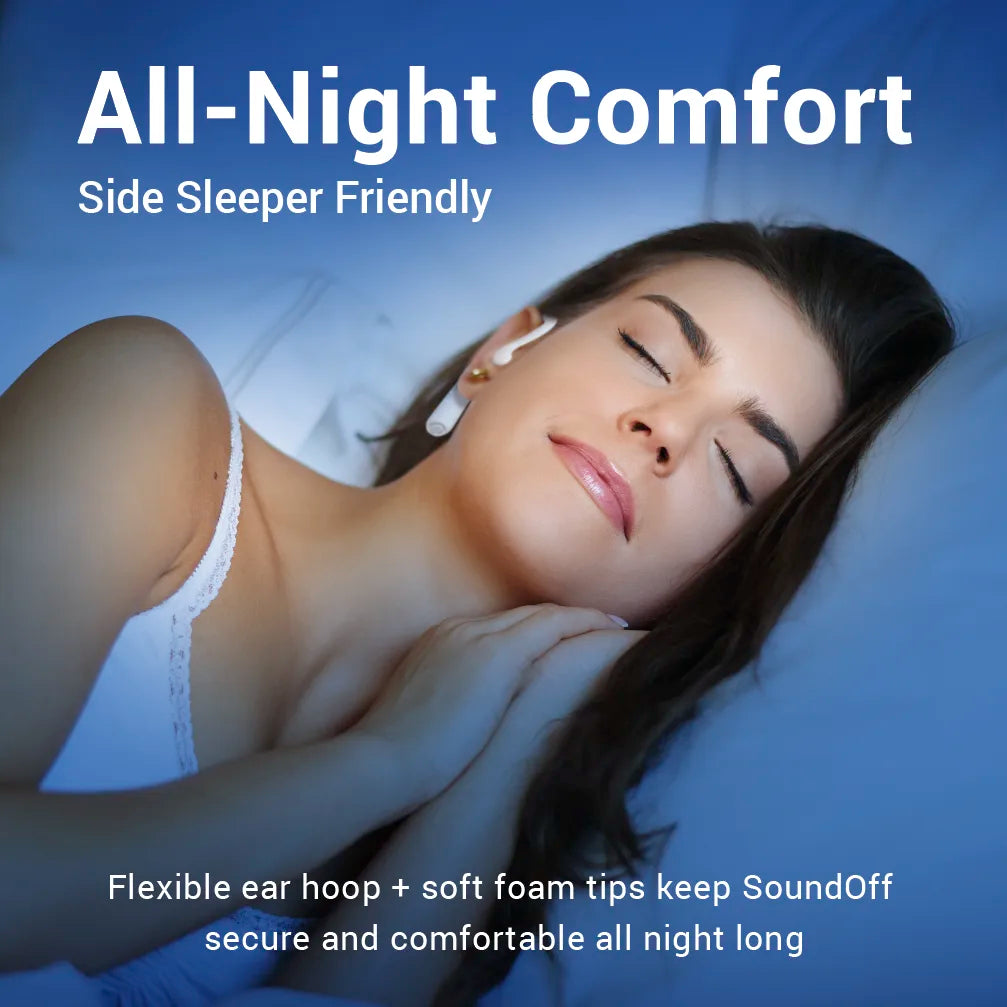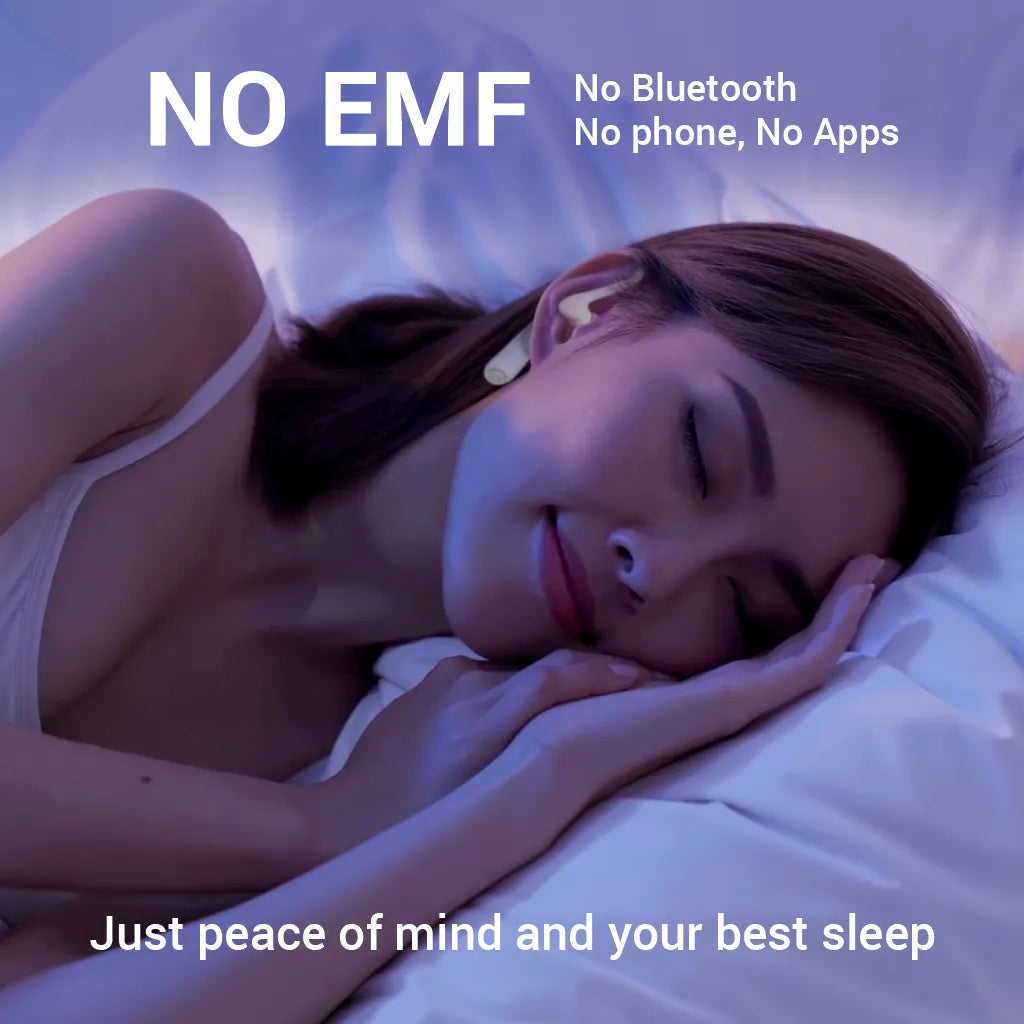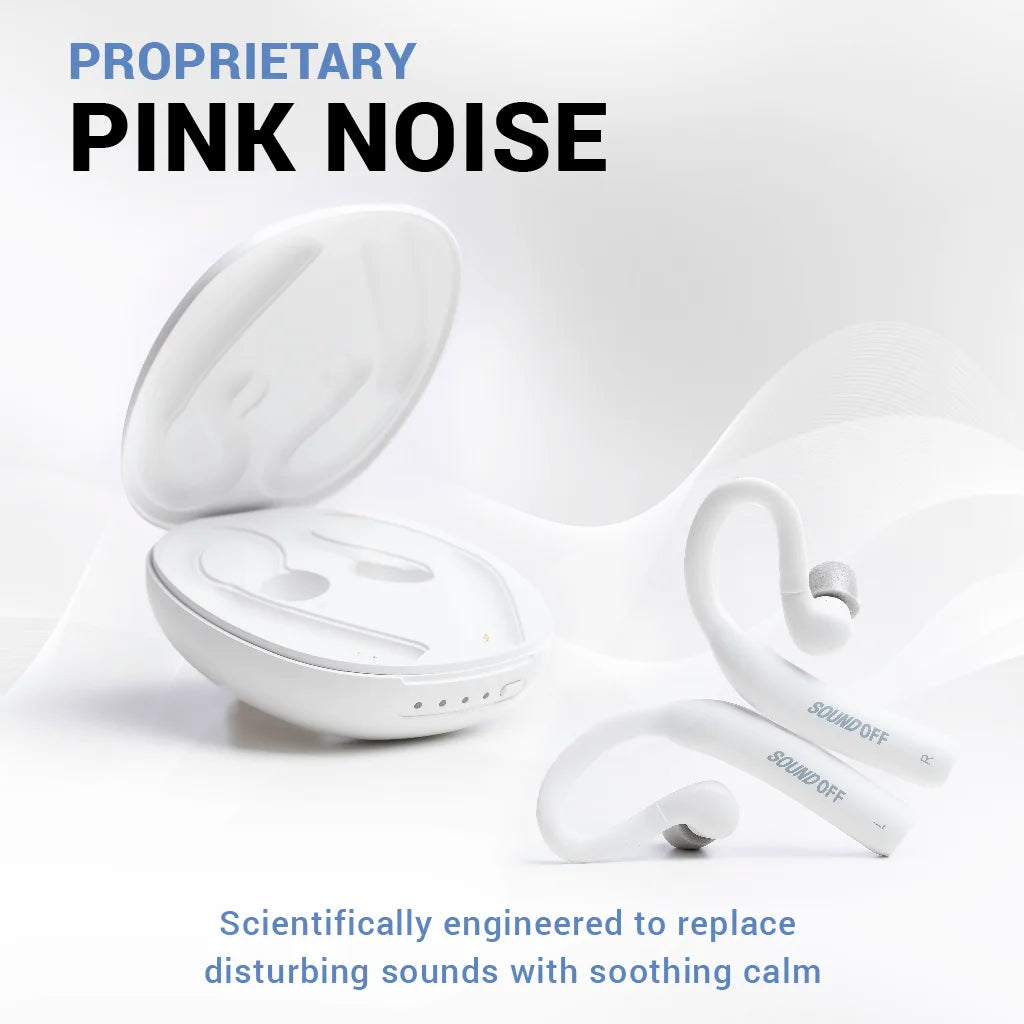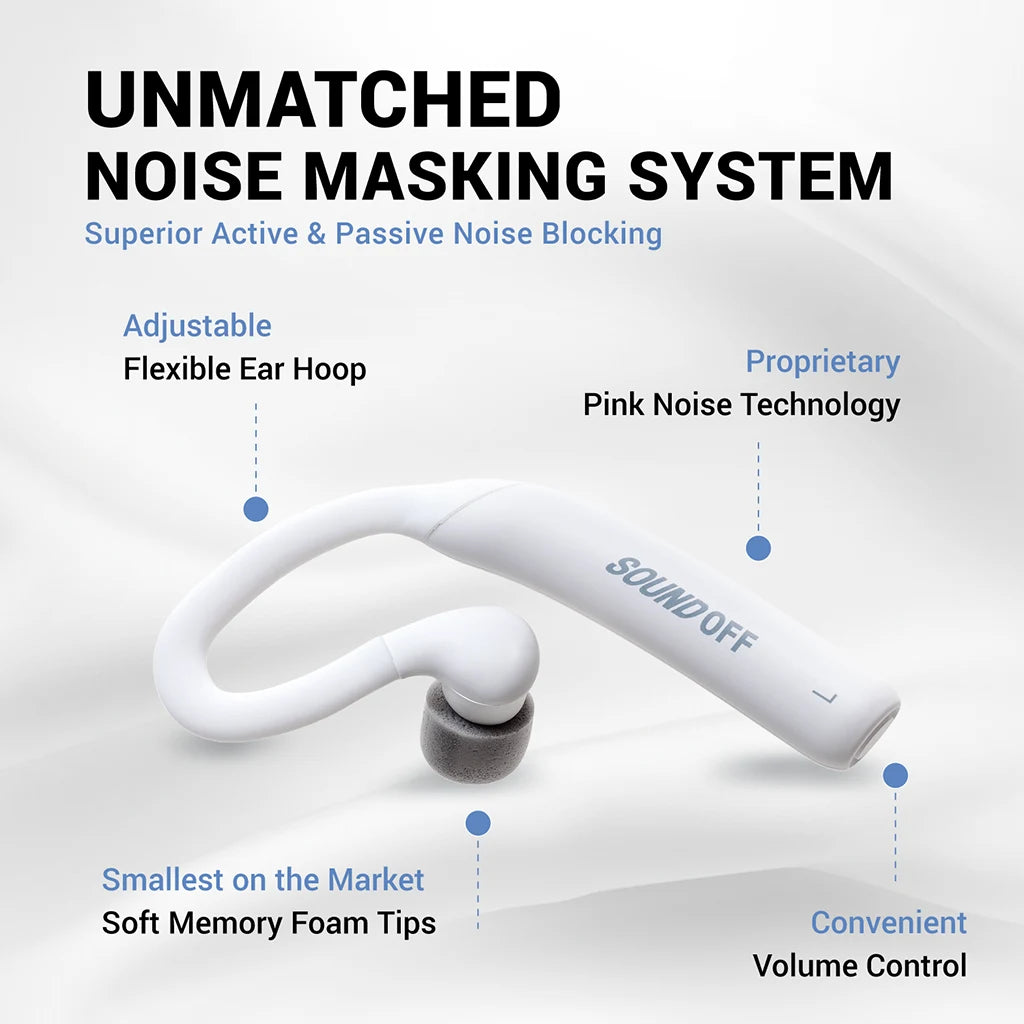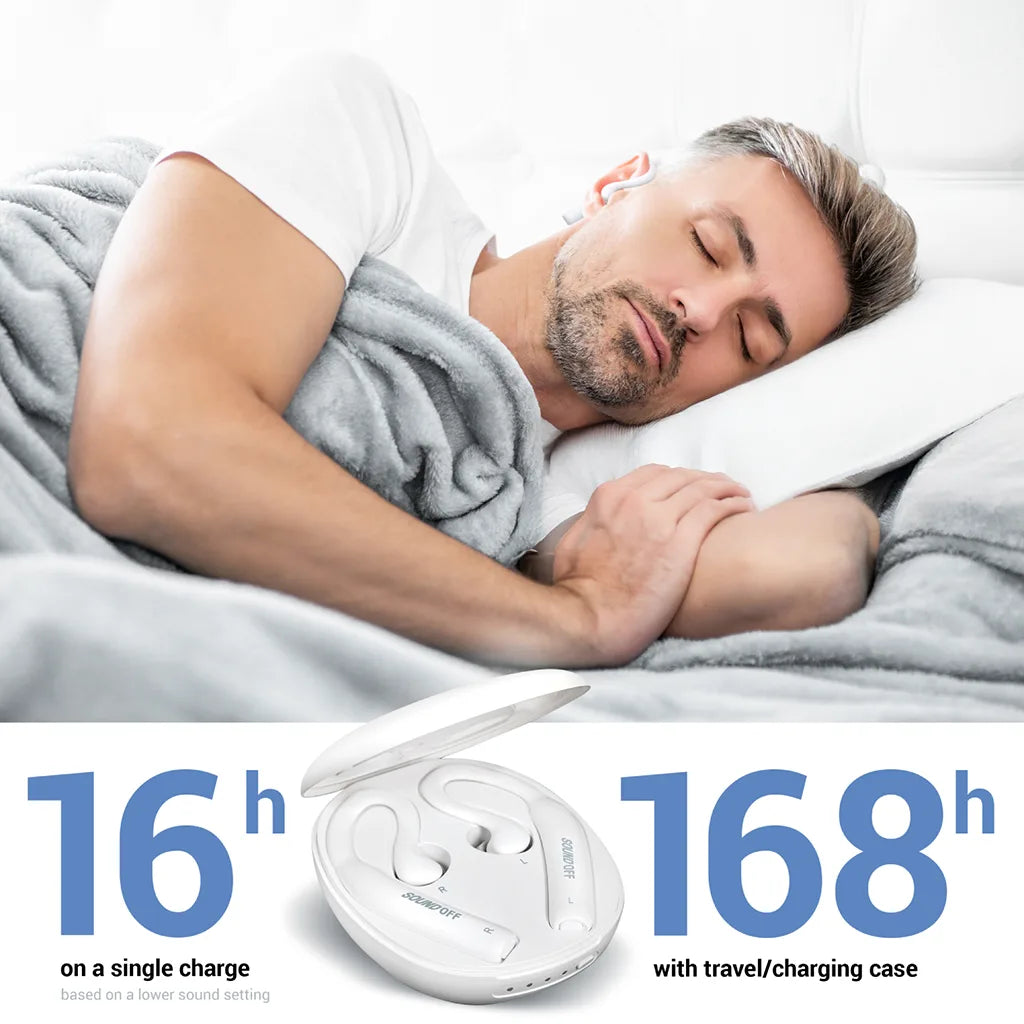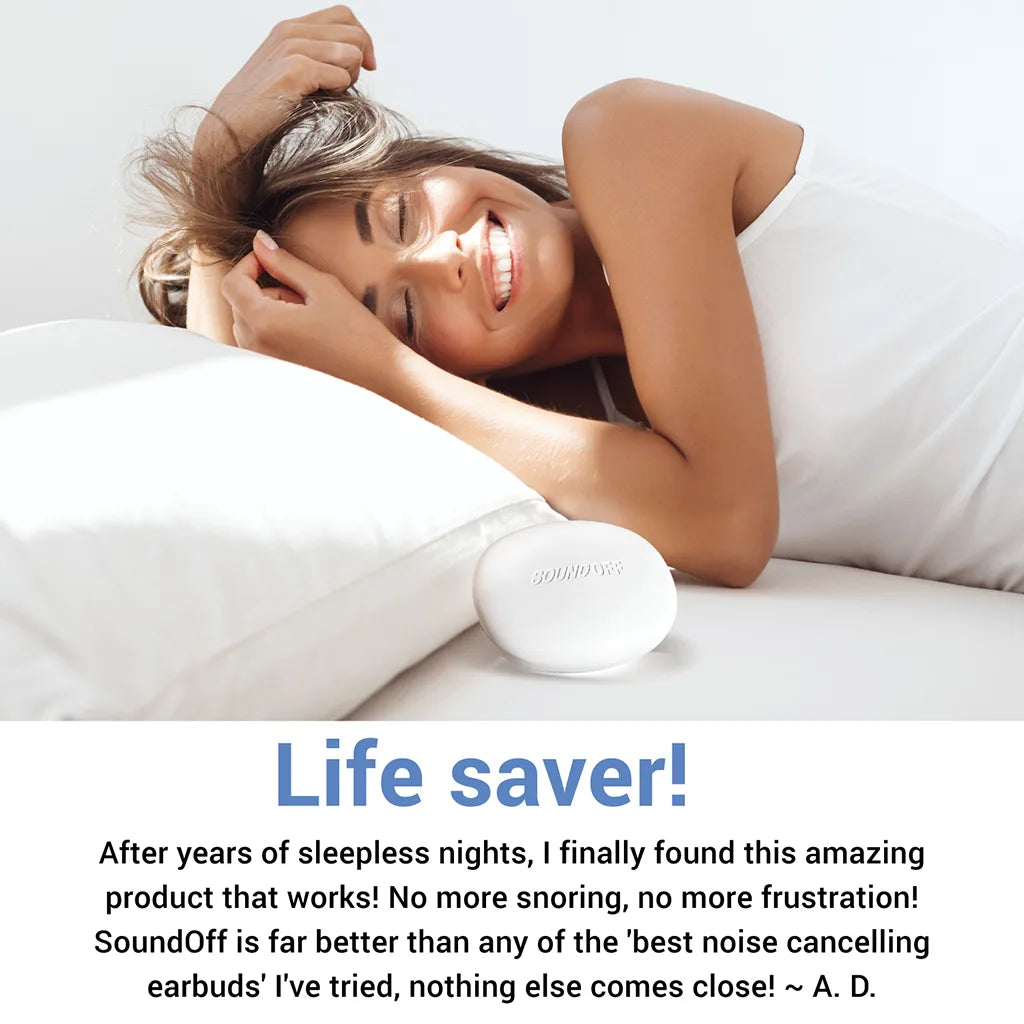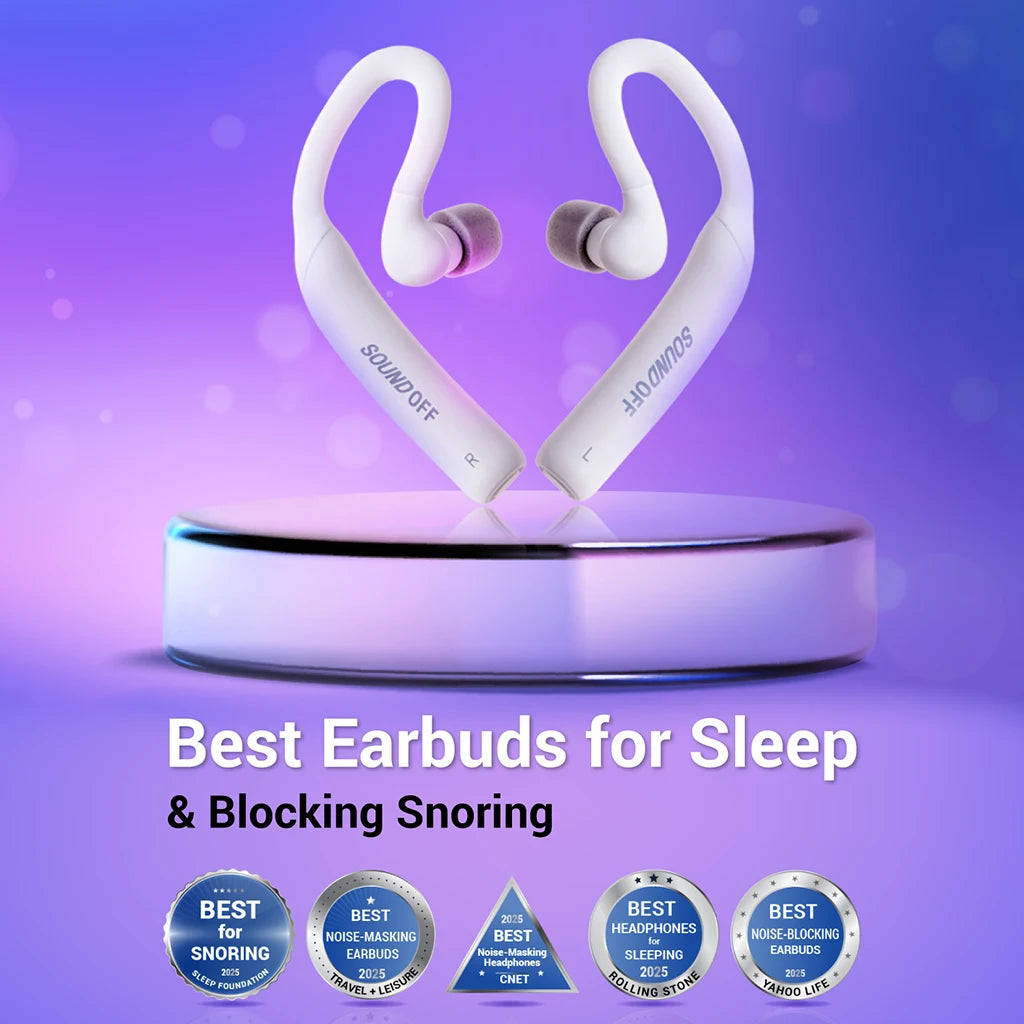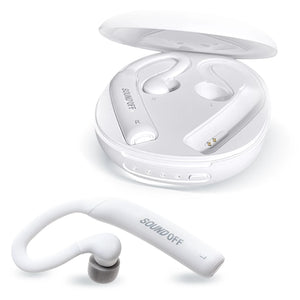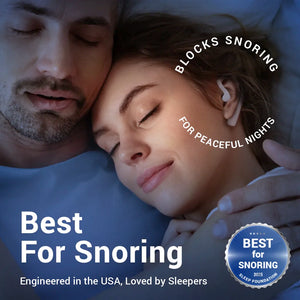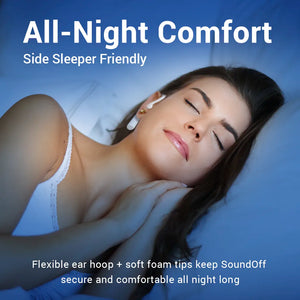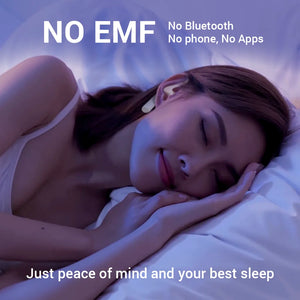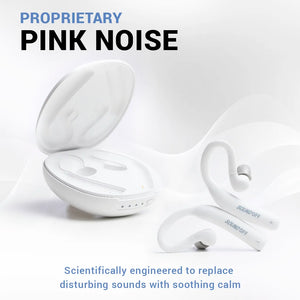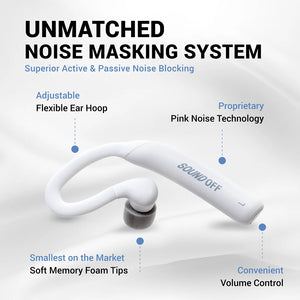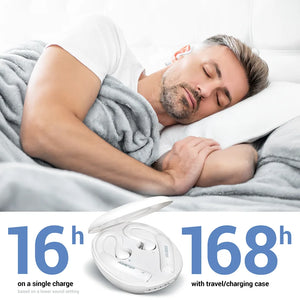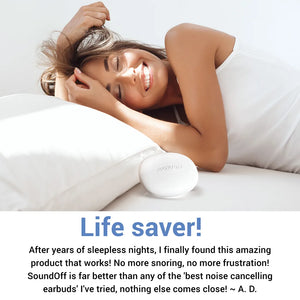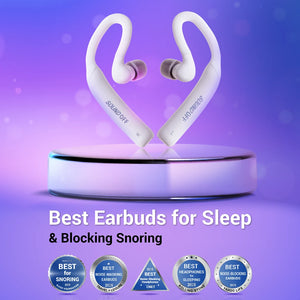How Can I Sleep Better? Exploring the Benefits of Pink Noise for Restful Sleep
In today's fast-paced world, getting a good night's sleep can feel like a luxury rather than a given. We all know the feeling—tossing and turning, staring at the ceiling, counting sheep and checking the clock to see just how little time we have left before the alarm rings. If you're asking yourself, "How can I sleep better?" you're not alone. Millions of people around the globe are struggling with sleep issues. Some have difficulty falling asleep, some experience frequent waking during the night and some suffer from both.
Many factors can disrupt sleep, from daily stress, environmental noise, or just not being able to turn your brain off, but the good news is that there's a simple and effective solution you may not have considered yet—pink noise. While most of us have heard of white noise, pink noise is a lesser-known but highly effective way to improve sleep quality and help you get the rest you desperately need.
In this blog, we'll explore what pink noise is, how it works, and why it might be the answer you've been searching for to achieve better, more restorative sleep. We all want that, right?
What is Pink Noise?
To understand how pink noise can improve your sleep, it's essential first to understand what pink noise is and how it differs from other sounds like white noise. Pink noise is a type of sound that is characterized by its balanced frequency distribution. It has more power in the lower frequencies and less in the higher frequencies, which creates a soothing, consistent sound that is often compared to sounds in nature, like rainfall, ocean waves, or wind blowing through trees.
In contrast to white noise, which contains all frequencies at equal levels and can sound harsh or grating to some, pink noise is gentler and more calming. This makes it particularly effective for sleep, as it helps to mask disruptive noises while providing a soothing backdrop that encourages relaxation and sleep.
How Does Pink Noise Affect Sleep?

Research has shown that pink noise can have a profound impact on the quality of your sleep. One of the primary ways pink noise helps improve sleep is by masking other sounds that might otherwise wake you up or prevent you from falling asleep in the first place. If you live in a noisy environment, such as near a busy street or with thin walls, you know how disruptive external sounds can be to your sleep.
Pink noise creates a steady, soothing background hum that reduces the difference between louder and softer sounds. By doing so, it effectively "masks" sudden or jarring noises, such as a car horn or a neighbor's footsteps, allowing you to sleep through the night without being disturbed.
But the benefits of pink noise go beyond simply masking sounds. Research has found that pink noise can also slow down brain waves, leading to more stable and deeper sleep. A2012 study published in the journalNeuroscience found that when participants were exposed to pink noise, their brain waves slowed down, resulting in improved memory retention and cognitive function. This is because pink noise helps promote deeper, more restorative sleep, which is essential for both mental and physical health.
The Science Behind Pink Noise and Sleep Cycles
Our sleep is divided into different stages, including light sleep, deep sleep, and REM (rapid eye movement) sleep. Each stage serves a vital purpose in the overall restorative process of sleep. Deep sleep is when our bodies repair tissues, strengthen the immune system, consolidate memories and much more. It’s the phase of sleep that makes you feel refreshed and rejuvenated when you wake up in the morning.
However, many people find it difficult to reach or maintain deep sleep. This is another area where pink noise can help. By creating a soothing auditory environment, pink noise helps your brain transition into deeper stages of sleep more easily. It also helps maintain that state of sleep for longer periods, reducing the likelihood of waking up multiple times during the night.
A2017 study conducted inFrontiers in Human Neuroscience demonstrated that exposure to pink noise during sleep improved the quality of deep sleep in older adults. The study also showed enhanced memory performance the next day, suggesting that pink noise may be especially beneficial for people who struggle with memory or cognitive issues related to poor sleep.
How to Incorporate Pink Noise into Your Sleep Routine

Now that we've explored the benefits of pink noise, you may be wondering how to incorporate it into your nightly routine to improve your sleep. Luckily, it's easier than ever to make pink noise a part of your sleep environment, thanks to a variety of accessible options.
-
Earbuds with Pink Noise:
For those who live in noisy environments or share a bed with a partner who snores, pink noise headphones or earbuds can be a game-changer. These specialized earbuds are comfortable to wear while sleeping and allow you to enjoy pink noise while “masking” the sound of snoring, thus you hear pink noise and not the snoring. SoundOff Noise Masking Earbuds play a proprietary Pink Noise specifically shaped to mask snoring and other sleep disturbing noises. SoundOff customers say it “lulls them to sleep”. -
Combine Pink Noise with Relaxation Techniques:
If you struggle to fall asleep due to stress or anxiety, combining pink noise with relaxation techniques can further enhance its benefits. Try practicing deep breathing, meditation, or progressive muscle relaxation while listening to pink noise. This combination can help calm both your mind and body, making it easier to fall into a restful sleep.
How Pink Noise Compares to Other Sound Therapies
You might be wondering how pink noise compares to other types of sound therapy, such as white noise, brown noise, or even nature sounds. Each type of sound has its unique qualities, but pink noise stands out for its balanced frequency distribution, which makes it more relaxing and easier on the ears than white noise.
White noise, which contains all frequencies at equal levels, can sometimes feel too sharp or grating for sensitive listeners. It’s effective for masking noise but can create a less soothing sleep environment compared to pink noise. Brown noise, which has more power in the lower frequencies and sounds deeper and rougher than pink noise, can also be effective for sleep but may not appeal to everyone.
Ultimately, the best sound therapy for sleep comes down to personal preference, but pink noise offers a great balance of sound frequencies that promote relaxation and improve sleep quality for many people.
Other Benefits of Pink Noise Beyond Sleep
While pink noise is most commonly used to improve sleep, its benefits extend beyond the bedroom. Studies have shown that pink noise can also enhance concentration and focus during waking hours. For people who work in noisy environments or who struggle with distractions, pink noise can provide a calm, consistent sound that helps improve focus and productivity.
In addition, pink noise has been found to help with conditions like tinnitus, a ringing or buzzing in the ears that can be very distracting. By masking the sound of tinnitus with a more soothing background noise, pink noise can make it easier for people with tinnitus to sleep at night and focus during the day.
Conclusion: Pink Noise – Your Key to Better Sleep
If you're one of the many people struggling to get a good night's sleep, pink noise may be the solution you've been searching for. By masking disruptive noises and promoting deeper, more restorative sleep, pink noise can help you fall asleep faster, stay asleep longer, and wake up feeling refreshed and rejuvenated.
Whether you choose to invest in a noise-masking device, or try pink noise earbuds likeSoundOff Noise Masking earbuds, incorporating this soothing sound into your sleep routine can make a world of difference. If you've been asking yourself, "How can I sleep better?" it’s time to give pink noise a try and discover the benefits for yourself.
Sleep better, live better—with the calming power of pink noise.
References


